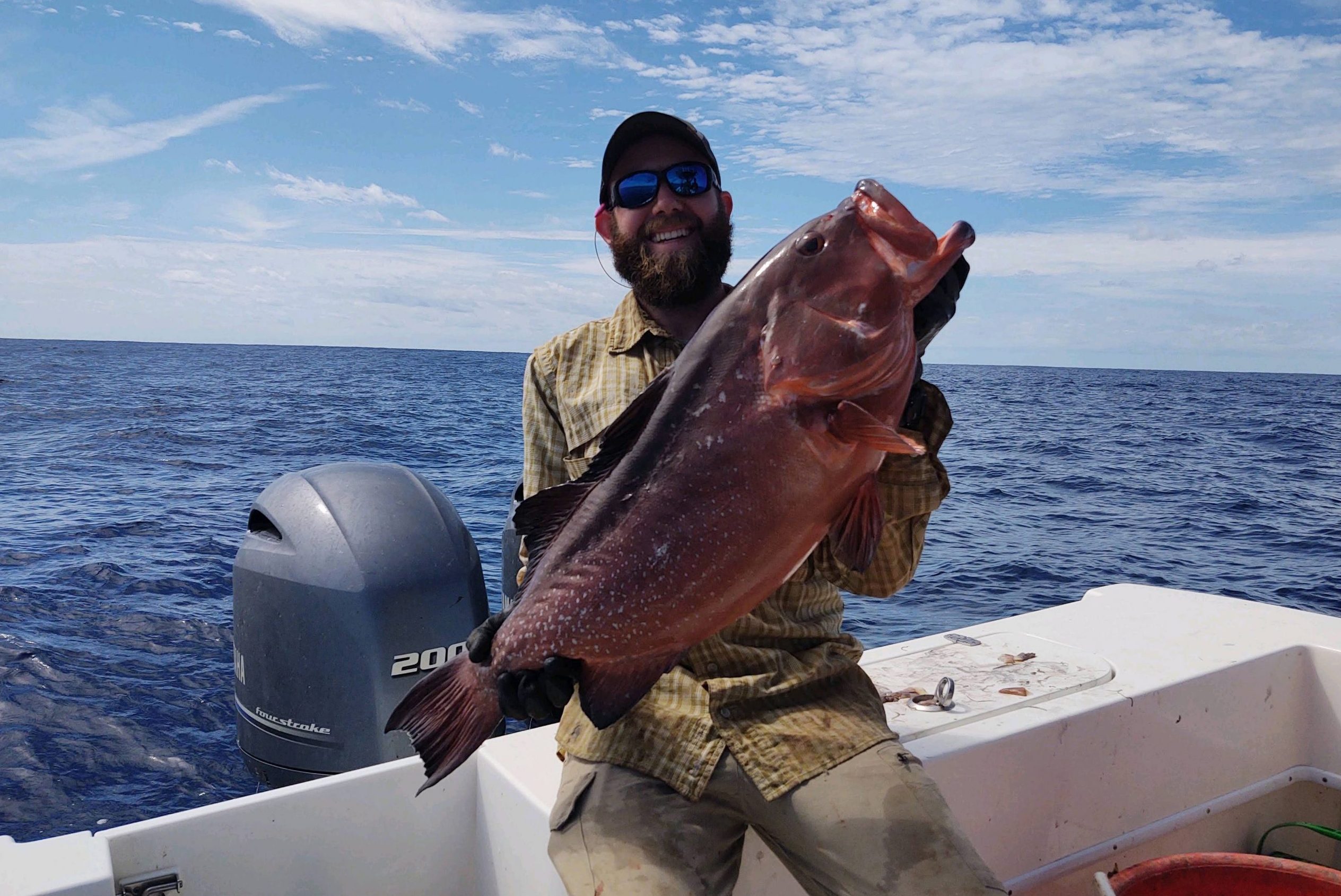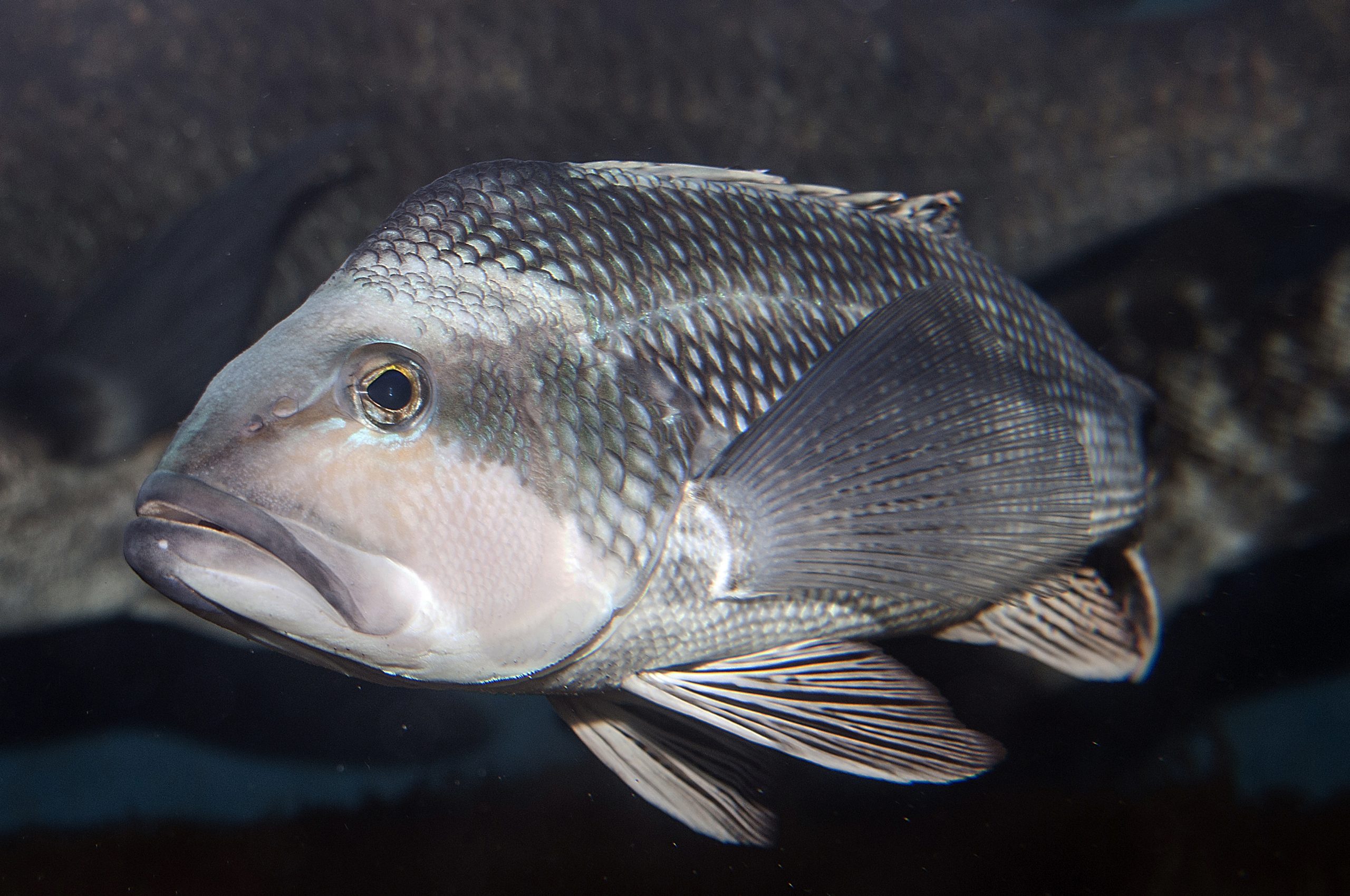
A new study from North Carolina State University and other partners finds that, for several species of oceanic sport fish, individual fish that are caught, released and re-caught are more likely to be caught again than scientists anticipated.
“The findings raise some interesting questions for policy makers tasked with preserving sustainable fisheries. The short version is that population estimates may be off for those species,” said Matt Shipman, N.C. State’s research communications lead.
Supporter Spotlight
Researchers looked at tagging datasets of black sea bass, gray triggerfish, red grouper and Warsaw grouper.
“These datasets were all from studies that one of the authors had conducted in recent years. In addition, each of these species has current or historical value in both the recreational and commercial fisheries of the U.S. Atlantic,” said Brendan Runde, doctoral candidate at N.C. State.
One goal of fishery managers is to obtain some idea about abundance of a stock — that is, how many fish of a certain species are out there? Sometimes, the data that scientists analyze to help answer the question of abundance are actual numbers of caught animals, including releases.
“My co-author and PhD advisor, Dr. Jeffrey Buckel, noticed a few years ago that in tagging studies, some fish are recaptured many times — up to seven recaptures for a single triggerfish in a study I completed a couple years ago and sometimes even more than that in other, longer-term studies,” he said.
“Of course, outside of tagging studies there is usually no way to know whether a fish you’ve just caught has ever been captured before. So, in some cases, when adding up the number of releases in a fishery, the possibility that some of the fish are being counted more than once has been ignored,” said Jeffrey Buckel, a professor with N.C. State’s Research Leadership Academy.
Supporter Spotlight

It’s important to note that this inaccuracy doesn’t happen in most cases because of how the fish are counted, but this phenomenon repetitive capture leaves the door open for overestimation of population sizes. In addition, the potential impact of this miscounting has increased for a lot of species in recent years because catch-and-release fishing has become much more popular.
One good example is bluefish, which are abundant, ubiquitous and easy to catch. In the 1980s, something like 75% of the bluefish caught in the U.S. were harvested. But angler preferences have changed dramatically since then, and now it’s virtually reversed: About 70% of bluefish caught in the last few years have been released, according to the National Oceanic and Atmospheric Administration’s Marine Recreational Information Program.
“What this means is the proportion of releases has increased by a huge factor, and so overall release numbers today are probably composed of far more double- and triple-counted fish than in the 1980s. This makes it challenging to compare numbers among different years,” said Runde.
“Regarding dead discards, one major finding of our study was that for three of four tagging datasets examined, the proportion of released fish that survive appears to go up after the first release. This is counterintuitive — we expected that the effects of capture including hooking, handling, and pressure-related trauma would be sort of cumulative, and that fish that are more likely to die after perhaps the third release as compared to the second,” said Buckel.
“But instead, we found something like this: imagine a pond where you tag and release 1,000 fish. Let’s say you recapture 100 of them at least once and release those 100 again. Just playing the odds — a 10% recapture rate — you’d expect to recapture about 10 of those 100 a second time,” he said.
Factoring in that catch-and-release fishing sometimes results in death to the fish, it might be reasonable to predict something like seven of the 100 would be recaptured a second time.
“But what we found is more like 20-30 of the 100 are recaptured again. That’s a bit of an oversimplification, but the fact remains that it appears as though the proportion that survive is higher after the second, third, and fourth release as compared to the first,” Runde said.
Taking that information and combining it with the idea that many released fish are being counted multiple times, it becomes clear that the number of dead discards is probably being overestimated in some cases.

“As we show in the paper, there are a couple of stock assessment implications. We looked at how the results of two recent assessments changed if we decreased the number of dead discards used in the model — this decrease reflects what we believe to be the case. We found that the maximum level of fishing that can occur while still being sustainable went up in both assessments when we decreased the number of dead discards,” Buckel explained.
“This makes sense, because a lower discard mortality rate means that more young fish, which are regularly discarded due to small size are likely to reach maturity. Hopefully, our study will encourage assessment scientists to consider the possibility that discard mortality estimates should change depending on the prevalence of repeated capture in the fishery,” said Runde.
Buckel said he expects policy makers will be interested in any research that suggests stocks are in better shape than was previously thought. “Our finding of potentially overestimated discard mortality would fall into that category. However, it’s important to note that these findings may be species-specific, and there’s always more research that could be done,” said Buckel.
Additionally, the notion that a large proportion of released fish have been counted multiple times should be appreciated by policy makers for any analysis that uses releases to infer abundance, Runde noted.
“One conclusion that is most surprising is the notion of higher survival for later release events. I think it’s important to note that we investigated other reasons besides survival that could have caused certain individuals to be recaptured multiple times. For instance, if a population of fish was divided into two behavioral types, aggressive and shy, one might expect to continuously catch the aggressive fish while rarely seeing the shy fish,” he said.
The researchers do not believe that behavioral types influenced the findings. That’s because the disparity in catch probability between the two types would have to be extremely wide in order to explain the numbers and the “shy” behavior would have to set in immediately after the first capture when the fish was tagged.
“In addition, it has been suggested that some tagging effects, like tag loss and tag-induced mortality, could explain our findings. But again, the magnitude of these phenomena that would be required to produce the values we observed means that this explanation is very unlikely,” Buckel said.







